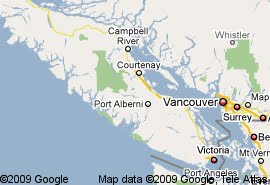
"The Last Three" Bids a Sad Farewell to Rhinos on the Brink of Extinction
The passing of Sudan is a sobering reminder of the many other endangered species that we must do more to protect. Don't let chimpanzees be next, help us to protect chimps and their habitat here: https://janegoodall.ca/ways-to-give/give-once/ … Photo By: Ami Vitale, National Geographic Creative
"The Last Three" Bids a Sad Farewell to Rhinos on the Brink of Extinction
There were three northern white rhinos
left when Australian artists Gillie and Marc Schattner unveiled their
monument in New York City. Now there are just two.

The Last Three, an installation created by Australian artists Gillie and Marc Schattner, is a poignant portrait of an actual animal family and a species that will soon disappear from the face of the earth. The bronze rhinos are accurate in every detail, including the rough, wrinkled skin, although they are slightly larger than the real ones, Gillie says. Together, the three effigies form a tower of tribute―but equally important, they serve as a call to action, since the northern white rhinos of east and central Africa have been hunted to the brink of extinction. Their horns—touted to have medicinal powers—are considered to be among the most expensive substances on the planet, traded for more than the price of gold or cocaine in the markets of China and Vietnam. In fact, the protein that makes up rhino horn has no more potency than human fingernails.
And now there are two. While Gillie and Marc (who sign their works with their first names only) were unveiling their monumental rhino pyramid in New York on March 15, 45-year-old Sudan was taking his final breaths in Ol Pejeta Conservancy in Kenya. The trio of animals lived under a team of devoted caretakers and 24-hour armed guard to protect them from poachers. When Sudan’s age-related medical conditions grew significantly worse, veterinarians decided to euthanize him. In a last-ditch attempt to save the species, the trio had been transferred from a zoo in the Czech Republic in 2009, but efforts to breed the rhinos had failed. Sudan had a low sperm count, perhaps as a result of his advanced age, and Najin and Fatu both proved to have fertility issues that made reproduction impossible.
With no living male and two infertile females, the northern white rhino species (or subspecies, depending on which scientist you talk to) has come to the end of its road. (Najin and Fatu will remain at Ol Pejeta.) “The fact of the matter is that we’ve taken our eye off the ball and allowed this to happen, so the blood is on all of our hands,” Marc says. With the sculpture’s position in Astor Place, one of New York’s busiest hubs, he hopes it will raise awareness of the rhinos’ plight and encourage the city’s residents and tourists to sign an online petition demanding an end to the illegal trade in rhino horn. It’s a crisis that has also brought Sudan’s cousins to the brink of extinction, Marc adds. “The eastern black rhinos are next. They are down to only about 2,000 and their numbers are dwindling. Before we know it, we’ll have no rhinos at all.”
The husband-and-wife artists knew when they took on the project last year ago that they were fighting the clock. They spent a week at the Kenyan conservancy observing the rhinos at close range, especially the elderly Sudan, who was the most approachable of the three, Gillie says. “We studied them every day. We photographed their skin, faces, bodies. We watched them move. We watched them breathe. We touched them.” She says Sudan had the gentle manner of a friendly dog, while the younger females required more caution.
Back in Sydney, where they live, the Schattners molded clay models of the three animals, which were then cast at a foundry in Thailand and packed into two shipping containers for the voyage to the United States. The artists hope that as many as five million people in New York will see the statue before it travels to Melbourne, Australia, later this year. “Marc and I believe it’s never been more critical to connect people to nature so that we’re visibly confronted with what we’re doing to the planet,” Gillie says. “That’s why it was so important to bring the northern white rhinos to New York.”
The Last Three by Marc and Gillie is currently on display in New York City’s East Village; no closing date has been announced.
onEarth provides reporting and analysis about environmental science, policy, and culture. All opinions expressed are those of the authors and do not necessarily reflect the policies or positions of NRDC. Learn more or follow us on Facebook and Twitter.


No comments:
Post a Comment